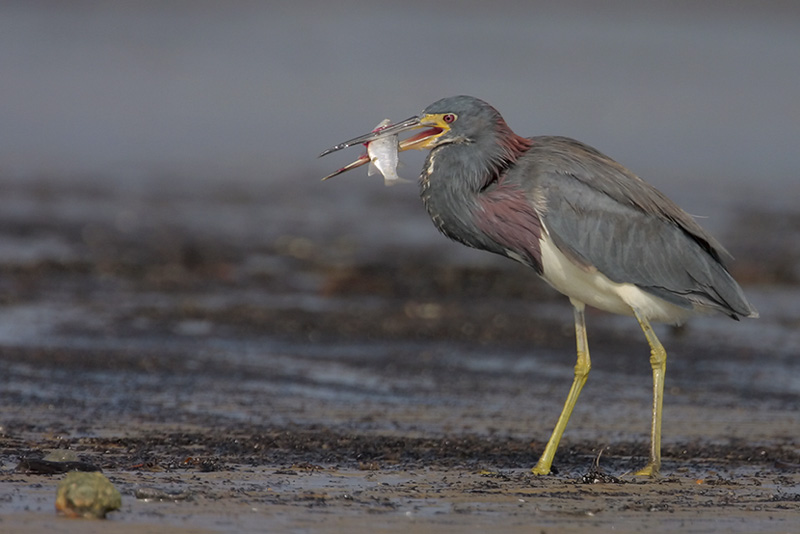Tricolored Herons (Egretta tricolor) are elegant wading birds with, you guessed it, tricolored plumage. They are found in various wetland habitats with shallow waters where they patiently wait and stalk their prey, sometimes ending up running after them.
On this page
Identification
Tricolored Herons belong to the Ardeidae family and share the body-build characteristics of the birds in this family. They are medium-sized herons, measuring 22-30 inches long with a wingspan of around 38 inches. Their bodies are sleek and slender, with long greenish legs and necks and a daggerlike bill.
As the name suggests, the adult Tricolored Heron is characterized by the three distinct colors on its plumage: bluish-gray, white, and lavender.
Their heads, neck, upperside, and wings are slaty-blue overall, whereas their underside and wing linings are white. They also have a white line running from their throat down their neck to their bellies.
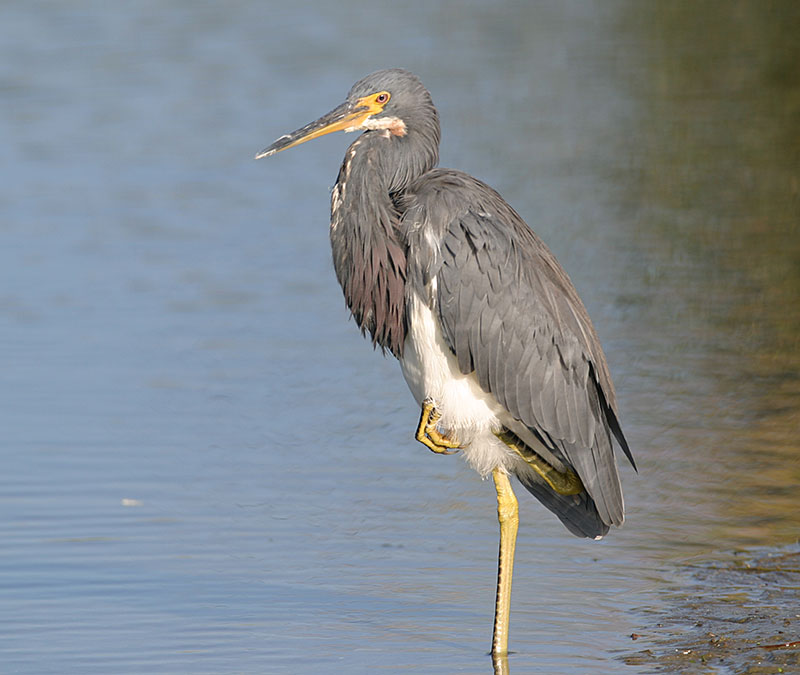
Parts of their neck, back of the head, and wings have purplish hues. During the breeding season, they have small white plumes growing from the back of their heads and their otherwise black-tipped yellow bill turns to blue.
Juvenile Tricolored Herons look similar to adults in terms of bill and leg color and plumage pattern but are a bit more colorful. Instead of slaty-blue and lavender, they have mostly reddish heads and necks with some rust-colored spots on their otherwise slaty-blue back and wings.
In flight, look for a white belly, white wing linings, slaty-blue flight feathers, and a rounded slaty-blue tail. Their necks are tucked into an S-shape and their tails are trailing behind their bodies well past their tails.
Vocalizations
Tricolored Herons often emit a series of clucking, squawking, or croaking sounds, which can range from low, guttural notes to sharper and nasal tones. During courtship, they rapidly snap their bills together, creating a distinctive rattling sound. Their wingbeats create a whomp sound.
Food
Tricolored Herons are carnivores, and their diet primarily consists of a variety of aquatic prey. They adapt their hunting habits to their habitats and the type of prey they’re after. Generally speaking, they are solitary foragers and chase away other birds.
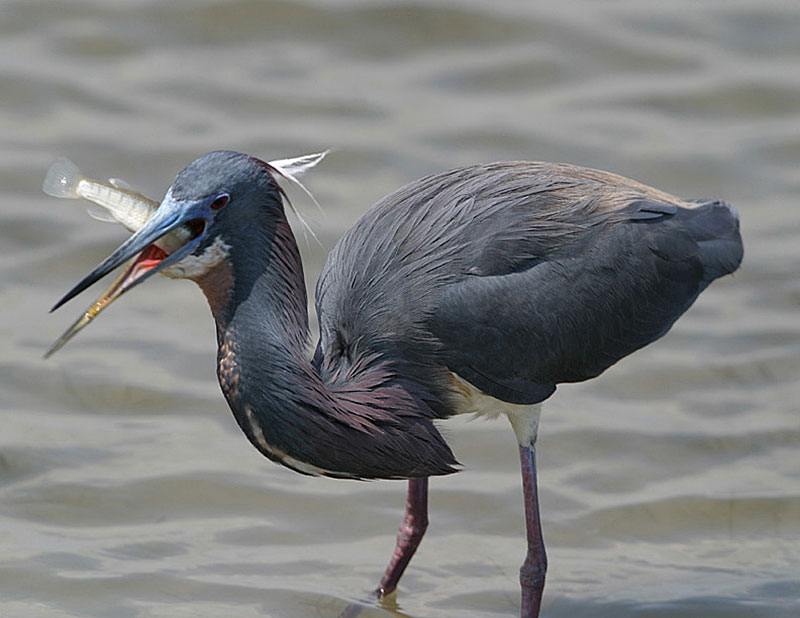
Fish make up a significant portion of the Tricolored Heron’s diet. They are skilled hunters, targeting small fish such as minnows, killifish, and others.
Crustaceans, including crabs, prawns, and crayfish, are also important components of their diet. Tricolored Herons use their long bills to snatch crustaceans from the water’s surface or mud. They may also forage for aquatic insects and their larvae in shallow waters or the vegetation surrounding wetlands. Sometimes they also go after amphibians, leeches, or small reptiles.
Tricolored Herons are visual hunters, relying on their keen eyesight to detect prey in the water. Their feeding strategies involve standing still and waiting for their prey to show, stalking slowly through shallow waters, often in a hunched posture with their necks coiled, or outright chasing their prey. When a potential meal is spotted, they use their sharp bills to strike quickly to snatch it up.
Nesting and Eggs
Tricolored Herons are monogamous and breed in colonies. The male chooses the nesting site and aggressively defends it. Females approach males, who court them near their nesting sites. Courtship includes males bowing, flying in circles around the nesting site, and neck stretching.
After forming the bond, the pair begins to build a nest. Tricolored Heron’s nests are usually 2-10 feet above the ground or water in trees such as willows, mangroves, or thickets.
They sometimes also build their nests on dry ground in dense vegetation. Males are in charge of gathering nest material, whereas females do most of the building. The bulky platform is constructed of twigs and lined with smaller twigs and grasses.
Pairs have only one brood in a year with 2-7, usually 3-4 eggs in a clutch. Tricolored Heron’s eggs are pale greenish blue and measure 1.6-1.8 inches long and 1.2-1.3 inches wide.
Incubation lasts for 21-25 days, with both parents taking turns. Both of them also feed and look after their offspring. The young start climbing out of the nest at around the 3-week mark and gain independence after they’re able to fly, which happens about two weeks after that.
Current Situation
Tricolored Herons range along the eastern and southern coasts of the United States and along the coasts of Central America and northern South America. They are resident throughout most of their range, including in North America.
Tricolored Herons inhabit both fresh- and saltwater aquatic biomes and wetlands.
They are often found in coastal habitats, including estuaries, saltwater marshes, mudflats, mangroves, and tidal flats. On the other hand, they also like freshwater habitats such as swamps, ponds, lakes, rivers, and marshes. They prefer shallow, slow-moving, or still waters for foraging.
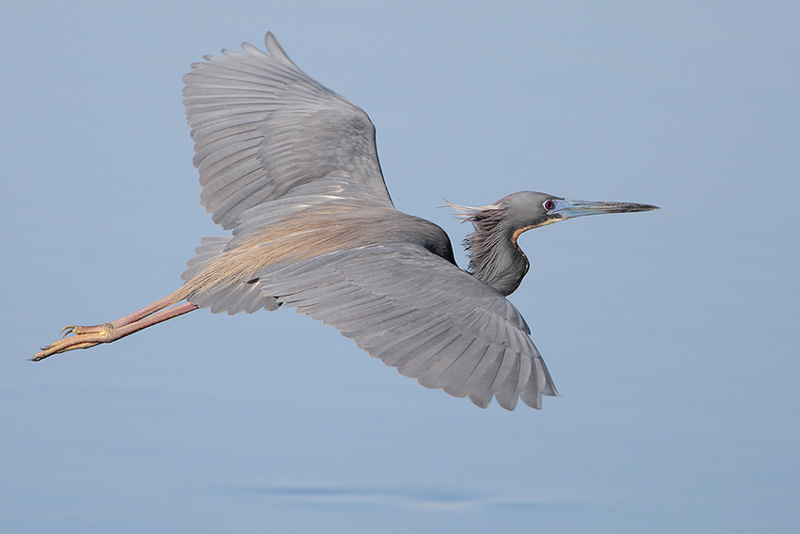
Tricolored Herons are listed as of least concern on the IUCN Red List with a stable or even slightly increasing population. They are most vulnerable to habitat degradation. There are no serious predators to adult birds, but eggs and nestlings may be picked off by crows, owls, or raccoons.
Facts
- Tricolored Heron chicks hatch over several days, and the first one to hatch has a better survival rate compared to its nestmates.
- Young Tricolored Herons don’t only fight amongst their nestmates. They also snap at their parents! Instead of disciplining them, however, the parents bow to them when returning with food.
- Tricolored Herons live around 7-10 years on average. The oldest known individual on record lived to be at least 17 years and 8 months old.
Similar Species
Tricolored Herons look quite similar to a few other heron species. This includes the Little Blue Heron, Reddish Egret, and Great Blue Heron. Here is all you need to know to distinguish them.
Little Blue Heron
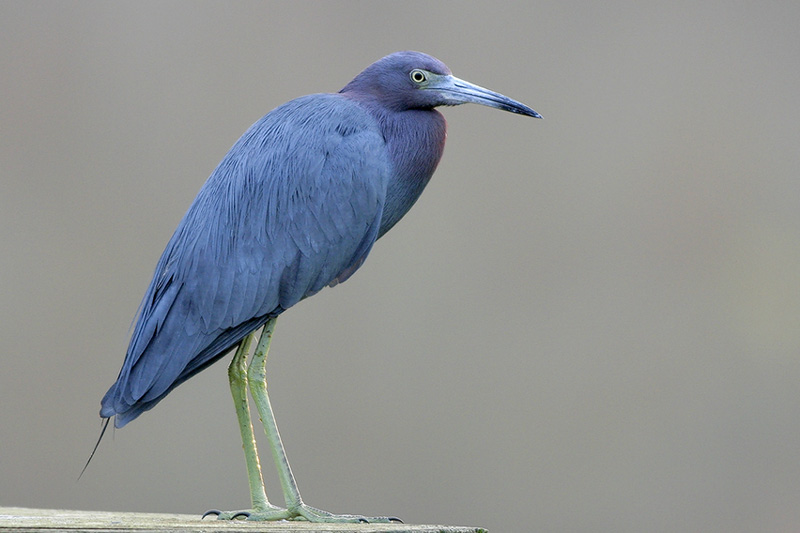
Little Blue Herons range throughout the eastern United States, Central America, and parts of the northern half of South America. They are resident along the coastline of the southeastern United States. Adults are slaty-blue and have a dirty dark purplish head and neck. Their bills are grayish with a dark tip. Juveniles are white.
If you’re unsure which species you’re dealing with, look at their neck, bills, and undersides. Tricolored Herons have a white stripe running down their neck to their white undersides but Little Blue Herons are uniformly dark. During the non-breeding season, the upper mandible of their bill is dark and the lower mandible yellow whereas the Little Blue Heron’s bill is grayish with a black tip.
Reddish Egret
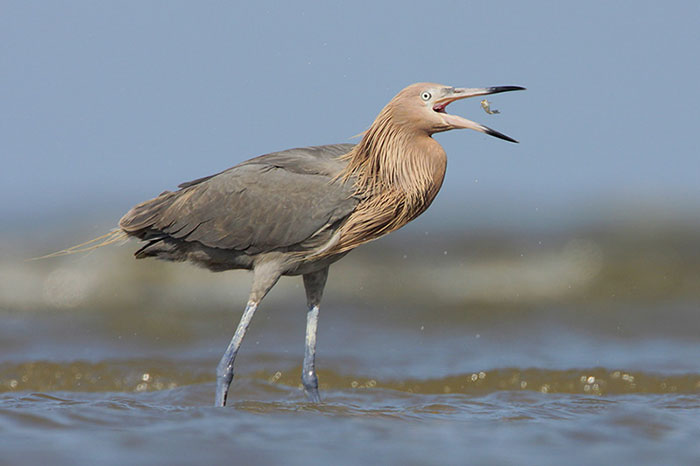
Reddish Egrets are mostly residents along the southern coast of the United States and the coasts of Central America and northernmost South America. They have two morphs – the dark and the white morph. Nonbreeding dark morphs are the most similar to Tricolored Herons. They have dark grayish bodies with rust-colored heads and necks. Their legs are bluish gray, and their bills pink with black tips.
As with the Little Blue Heron, look at their neck and bellies. Tricolored Herons have white undersides and neck stripe which the Reddish Egrets lack. However, they are otherwise slaty-blue with a few lavender accents, whereas Reddish Egrets have a rust-colored neck and head.
Great Blue Heron
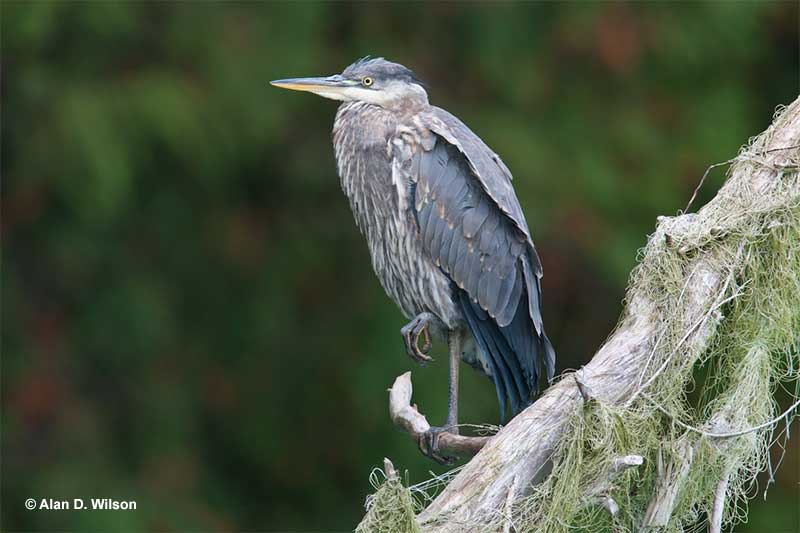
Great Blue Herons range throughout most of North America and Central America. Adults are pale grayish-blue with a whitish face and long black head plumes. Compared to the Tricolored Herons, they are much paler, larger, and have uniformly yellow bills. Tricolored Herons do not have black head plumes.
Frequently Asked Questions
What is the difference between Tricolored and Little Blue Herons?
Little Blue Herons are uniformly dark all over, whereas Tricolored Herons have a white stripe running from their throat down their neck to their white belly.
Are male and female Tricolored Herons different colors?
Male and female Tricolored Herons look the same.
How big are Tricolored Herons?
Tricolored Herons are medium-sized herons, measuring 22-30 inches long with a wingspan of 38 inches.

